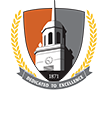If you decide to borrow, always think of federal aid first! Students must meet basic eligibility criteria set by the federal government and be making satisfactory academic progress toward their degree to be eligible for federal student aid. To apply for federal aid, students need to submit a Free Application for Federal Student Aid (FAFSA) each year.
The following types of federal aid may be available to students and/or their parents.
Federal Pell Grant
The Federal Pell Grant is available to undergraduate students pursuing their first bachelor's degree who demonstrate financial need as determined by the FAFSA and do not need to be repaid. Student eligibility is based on the student's Student Aid Index (SAI) which is calculated by the federal government based on the information supplied on the FAFSA. The exact award amount is dependent upon the student's enrollment status (full-time, 3/4 time, half-time, or less than half-time) and their SAI.
Pell Grant Lifetime Limits
- A student may receive a Pell Grant for the equivalent of 12 full-time semesters or 600% OR
- Until the student has met the degree requirements of a bachelor's degree, whichever happens sooner.
Supplemental Educational Opportunity Grant (SEOG) is awarded to undergraduate students with the lowest Student Aid Index (SAI) who will also receive a Federal Pell Grant in that academic year. Funding is limited so students are strongly encouraged to file the FAFSA as soon as it is released. SEOG is awarded based on Buffalo State's packaging philosophy and ranges from $100 to $250 per semester. Financial need is required.
SEOG Grant Lifetime Limits
A student may receive an SEOG grant as long as they are pursuing their first bachelor's degree and are receiving a Pell grant.
The Teacher Education Assistance for College and Higher Education (TEACH) program provides grants of up to $4,000* a year to undergraduate or graduate students who are completing or plan to complete course work needed to begin a career in teaching. A TEACH grant is different from other federal student grants because it requires the recipient to take certain kinds of classes in order to qualify for the grant, and then do a certain kind of job to keep the grant from turning into a loan. If a student fails to complete the service obligation after graduation, the grant is converted into an unsubsidized loan with retro-active interest.
Students must file the FAFSA, meet GPA requirements and complete TEACH Counseling and an Agreement to Serve each year in which they want to use TEACH Grant funding. Students may receive up to $3,716 per year in TEACH grant funds.
TEACH Grant Lifetime Limits
- Undergraduate Students: $16,000
- Graduate Students: $8,000
*Note that TEACH Grants are subject to Federal Sequestration and will be reduced by a small percentage.
Federal Work Study (FWS) is a part-time job. Payment of work-study funds comes in the form of a paycheck, but only if a student secures a designated work-study position and works the hours. FWS is based on financial need. It is available only during the fall and spring semesters. Funding is very limited and awarded on a first-come, first-served basis. Students are encouraged to submit their FAFSA as soon as it is released.
Federal Direct Subsidized and Unsubsidized loans are available to students from the federal government through the Department of Education.
Subsidized loans are interest-free while the student is enrolled at least half-time. Fixed interest rates are set by the federal government and are subject to change.
Unsubsidized loans accrue interest while the student is in attendance. Students have the option to make interest-only payments on the loan while they are in school or defer all payments until after they graduate or leave school. Interest that has accumulated while the student is in school will be capitalized and added onto the principal balance of the loan. Students who do not qualify for a subsidized loan will usually qualify for an unsubsidized loan.
Annual loan limits are set for each class year by the Department of Education and cannot be changed by the school. Eligibility requirements are also determined by the Department of Education and all regulatory policies must be strictly adhered to by Buffalo State.
The Federal Direct Parent PLUS loan is a loan in the parent’s name to assist their undergraduate dependent student when there is a gap between the cost of attendance and the student’s financial aid.
Direct Grad PLUS loans for graduate and professional degree students can be considered only after accepting the maximum eligibility for Federal Direct Unsubsidized loans. The Graduate PLUS loan can be borrowed if there is a gap between the student’s cost of education and all other aid including the Direct Unsubsidized loan. As with all loan programs, we urge you to borrow conservatively.

